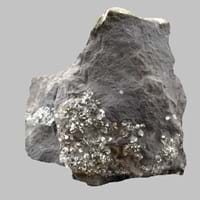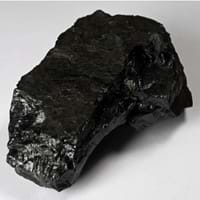Definition
Argillites are highly compact sedimentary or slightly metamorphosed rocks that consist largely or wholly of particles of clay or silt but lack the fissility of shale or the cleavage characteristic of slate
Coal is a combustible black or brownish-black sedimentary rock usually occurring in rock strata in layers called coal beds
Discoverer
Unknown
John Peter Salley
Etymology
From Latin Argilla (clay) and -ite in English which became agrilla+ -ite = Argillite
From the Old English term col, which has meant mineral of fossilized carbon since the 13th century
Class
Sedimentary Rocks
Sedimentary Rocks
Sub-Class
Durable Rock, Soft Rock
Durable Rock, Soft Rock
Group
Not Applicable
Not Applicable
Other Categories
Fine Grained Rock, Opaque Rock
Coarse Grained Rock, Fine Grained Rock, Medium Grained Rock, Opaque Rock
Texture
Clastic, Polished
Amorphous, Glassy
Color
Dark Grey to Black, Pink, Red, White
Black, Brown, Dark Brown, Grey, Light to Dark Grey
Durability
Durable
Durable
Appearance
Rough and Dull
Veined or Pebbled
Interior Uses
Decorative Aggregates, Homes, Interior Decoration
Not Yet Used
Exterior Uses
As Building Stone, Garden Decoration, Office Buildings
Not Yet Used
Other Architectural Uses
Curbing, Whetstones
Not Yet Used
Construction Industry
Used for flooring, stair treads, borders and window sills.
Cement Manufacture, for Road Aggregate, Making natural cement, Steel Production
Medical Industry
Not Yet Used
Not Yet Used
Antiquity Uses
Artifacts, Monuments, Sculpture
Artifacts
Commercial Uses
Fire resistant, Used to manufracture paperweights and bookends
Alumina Refineries, Electricity Generation, Liquid Fuel, Manufacture of Soap, Solvents, Dyes, Plastics and Fibres, Paper Industry
Types
Not Available
Peat, Lignite, Sub-Bituminous Coal, Bituminous Coal, Anthracite, Graphite
Features
Is one of the oldest rock
Helps in production of Heat and Electricity, Used as fossil fuel
Archaeological Significance
Monuments
Used
Not Yet Used
Famous Monuments
Data Not Available
Not Applicable
Sculpture
Used
Not Yet Used
Famous Sculptures
Data Not Available
Not Applicable
Pictographs
Used
Not Used
Petroglyphs
Used
Not Used
Figurines
Used
Not Yet Used
Formation
An argillite is a fine-grained sedimentary rock mainly composed of clay particles which forms from lithified muds which contain variable amounts of silt-sized particles.
Coal forms from the accumulation of plant debris in a swamp environment which is buried by sediments such as mud or sand and then compacted to form coal.
Mineral Content
Biotite, Chlorite, Feldspar, Micas, Muscovite or Illite, Plagioclase, Pyrite, Quartz
Analcime, Apatite, Barite, Calcite, Chalcopyrite, Chlorite, Chromite, Clausthalite, Clay Minerals, Crandallite Group, Dolomite, Feldspar, Galena, Gypsum, Marcasite, Muscovite or Illite, Pyrite, Quartz, Siderite, Sphalerite, Zircon
Compound Content
Iron(III) Oxide, Potassium Oxide, MgO, Silicon Dioxide
Carbon, Hydrogen, Nitrogen, Oxygen, Sulphur
Types of Metamorphism
Not Applicable
Burial Metamorphism, Cataclastic Metamorphism, Regional Metamorphism
Types of Weathering
Biological Weathering
Not Applicable
Types of Erosion
Chemical Erosion
Not Applicable
Grain Size
Fine Grained
Medium to Fine Coarse Grained
Fracture
Conchoidal to Uneven
Conchoidal
Streak
White to Grey
Black
Porosity
Highly Porous
Less Porous
Luster
Waxy and Dull
Dull to Vitreous to Submetallic
Cleavage
Slaty
Non-Existent
Toughness
2.6
Not Available
Specific Gravity
2.56-2.68
1.1-1.4
Transparency
Opaque
Opaque
Density
2.54-2.66 g/cm3
1100-1400 g/cm3
Resistance
Heat Resistant, Impact Resistant
Heat Resistant
Deposits in Eastern Continents
Asia
Bangladesh, China, India, Russia
Bangladesh, Burma, Cambodia, China, India, Indonesia, Kazakhstan, Malaysia, Mongolia, Pakistan, Turkey, Vietnam
Africa
Ethiopia, Kenya, Morocco, South Africa, Tanzania
Botswana, Kenya, Morocco, Mozambique, South Africa, Tanzania
Europe
Austria, France, Germany, Greece, Italy, Romania, Scotland, Spain, Switzerland
Belgium, Bulgaria, England, France, Germany, Greece, Hungary, Kosovo, Netherlands, Norway, Poland, Romania, Serbia, Slovakia, Slovenia, The Czech Republic, Ukraine, United Kingdom
Others
Not Yet Found
Not Yet Found
Deposits in Western Continents
North America
USA
Canada, Mexico, USA
South America
Bolivia, Chile, Colombia, Ecuador, Peru, Venezuela
Brazil, Chile, Colombia, Venezuela
Deposits in Oceania Continent
Australia
New South Wales, New Zealand, Queensland, Victoria, Western Australia
New South Wales, Queensland, Victoria
All about Argillite and Coal Properties
Know all about Argillite and Coal properties here. All properties of rocks are important as they define the type of rock and its application. Argillite and Coal belong to Sedimentary Rocks.Texture of Argillite is Clastic, Polished whereas that of Coal is Amorphous, Glassy. Argillite appears Rough and Dull and Coal appears Veined or Pebbled. The luster of Argillite is waxy and dull while that of Coal is dull to vitreous to submetallic. Argillite is available in dark grey to black, pink, red, white colors whereas Coal is available in black, brown, dark brown, grey, light to dark grey colors. The commercial uses of Argillite are fire resistant, used to manufracture paperweights and bookends and that of Coal are alumina refineries, electricity generation, liquid fuel, manufacture of soap, solvents, dyes, plastics and fibres, paper industry.










